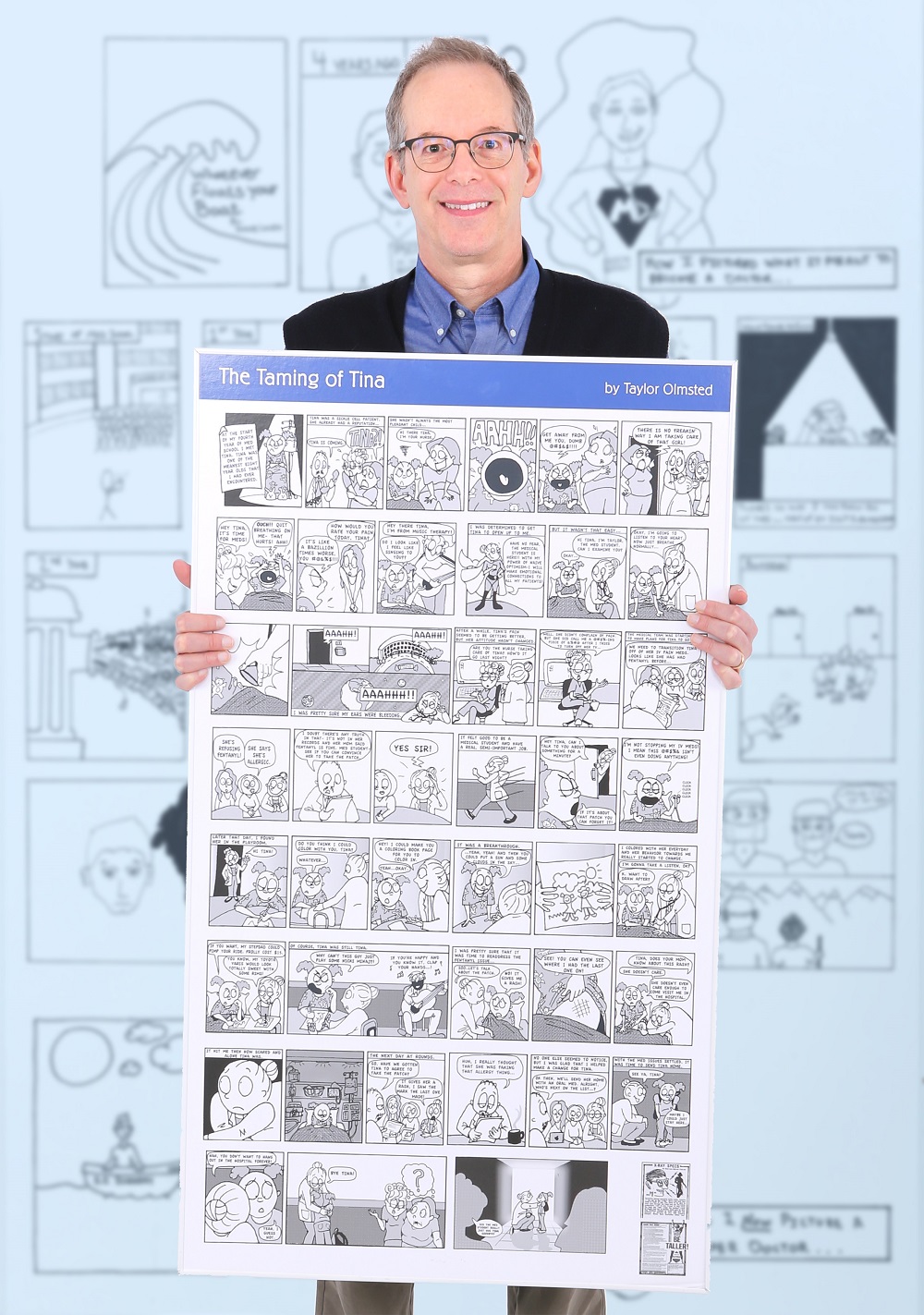Green examines doctor superhero myth in major medical journal

Extra! Extra! Read all about it! Doctors aren’t superheroes! Doctors are people!
Dr. Michael Green, professor of humanities and medicine at Penn State College of Medicine, provided this news flash in a recent article published in Annals of Internal Medicine.
In “Reimagining the Cape: Exploring New Metaphors for Emerging Medical Professionals,” Green reflected on four comics drawn by medical students. Each comic challenged the doctor-as-superhero myth.
“The students felt like there were certain expectations about what it means to be a doctor and, in some ways, felt burdened by them,” said Green, who teaches a course on comics and medicine.
Green said that while some of these expectations stem from external sources such as family, others are self-imposed. “The superhuman doctors who are bigger-than-life are part of popular culture.”
Green said that when students’ expectations clash with real life, they often question their assumptions about what it means to be a doctor, and discover they aren’t “Faster than a speeding bullet! More powerful than a locomotive! Able to leap tall buildings at a single bound!” They are simply people trying to care for patients as best they can.
“The Superman mythology does not accurately reflect the world in which students live,” Green said. “The job isn’t all that glamorous, they don’t save everyone, and sometimes it’s the little things that make the biggest difference.”
Green said it’s important that educators understand how their students think and feel so they can better prepare them for the inevitable challenges they’ll face and offer some tools to help cope with these challenges.
Dr. Darren Taichman, the journal’s executive editor, agrees. “There is a growing awareness that the medical community has not paid enough attention to the pressures of medical school and its consequences. We need to let students know that those superhero expectations are neither reality, necessary nor healthy.”
Two of the comics Green discussed were created by his former students, Michelle Syad and Shruti Sudhakar. Both comics deal with a medical student’s grief after losing a patient and their realization that a white coat fits better than a superhero cape.
Green’s Feb. 5 article in the Annals of Internal Medicine was his second one in a major medical journal in less than two months. In the Dec. 25, 2018, Journal of the American Medical Association, Green reviewed two graphic medicine books.
“I was asked to identify and review two of the best medically related comic that came out in the last year,” he said.
Along with colleague Mita Mahato, he chose Ellen Forney’s book “Rock Steady: Brilliant Advice From My Bipolar Life” as a graphic medicine exemplar from last year.
“Forney’s book is a manual on how to cope with mental health issues,” Green said. “She is a master of the comics medium. Not only does she deliver practical information, she does so in an accessible and often humorous way.”
The second book chosen by Green and Mahato was Marnie Galloway’s “Slightly Plural: Short Comics About Pregnancy, Birth and Parenthood.” Galloway’s book blows apart some of the myths of pregnancy.
“The stories she tells are personal, but the experiences she describes are universal. What’s interesting about her approach is that she tackles taboo topics in a way that is both illuminating and challenging,” Green said.
While there have always been numerous ways to tell a story, using comics to convey ideas and emotions has grown in popularity, Green said.
“Medically themed comics resonate with people. The visual aspect seems to make the material less scary than other ways of communicating, and this makes the stories accessible to a much wider audience.”
If you're having trouble accessing this content, or would like it in another format, please email Penn State Health Marketing & Communications.
